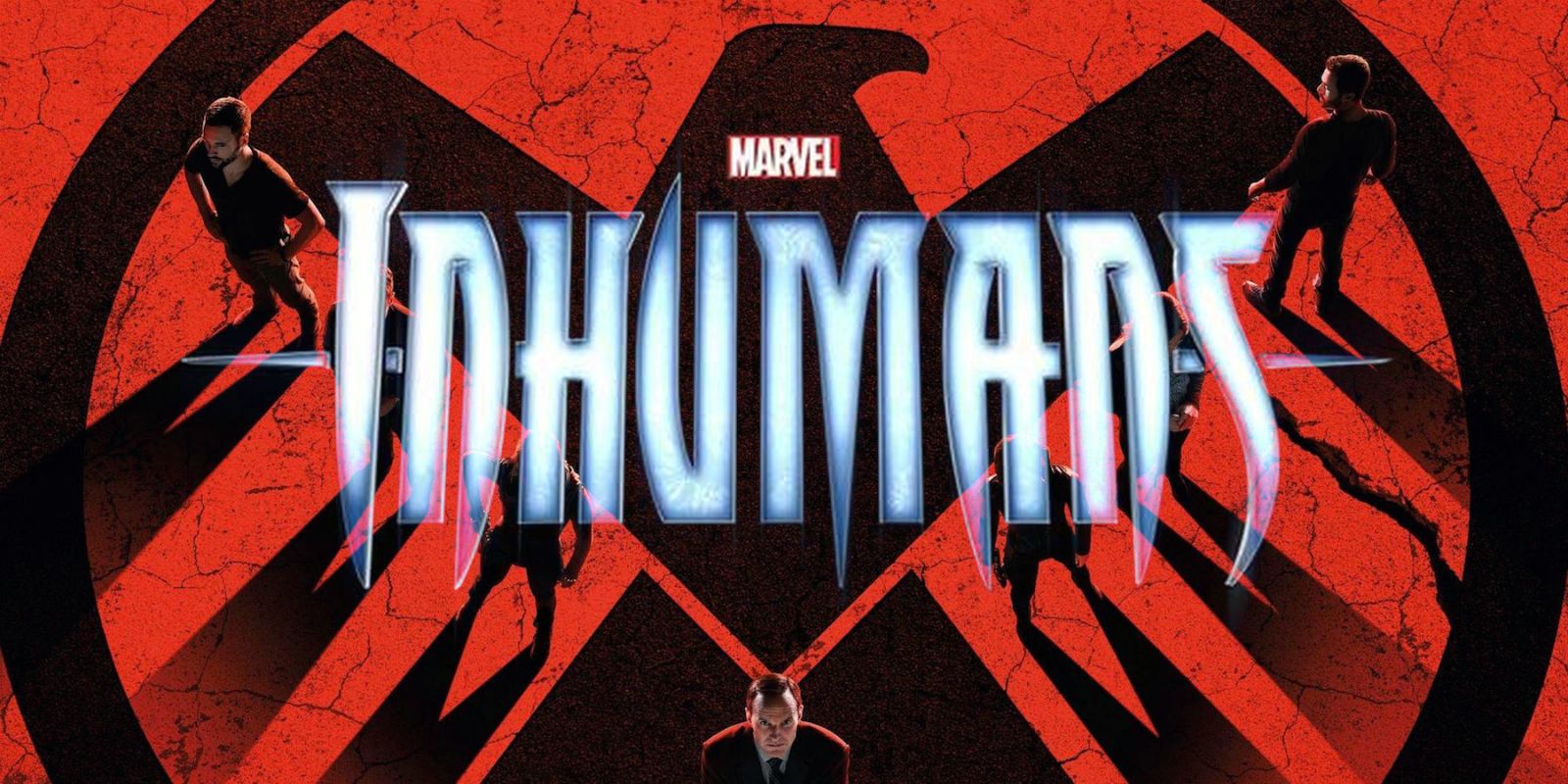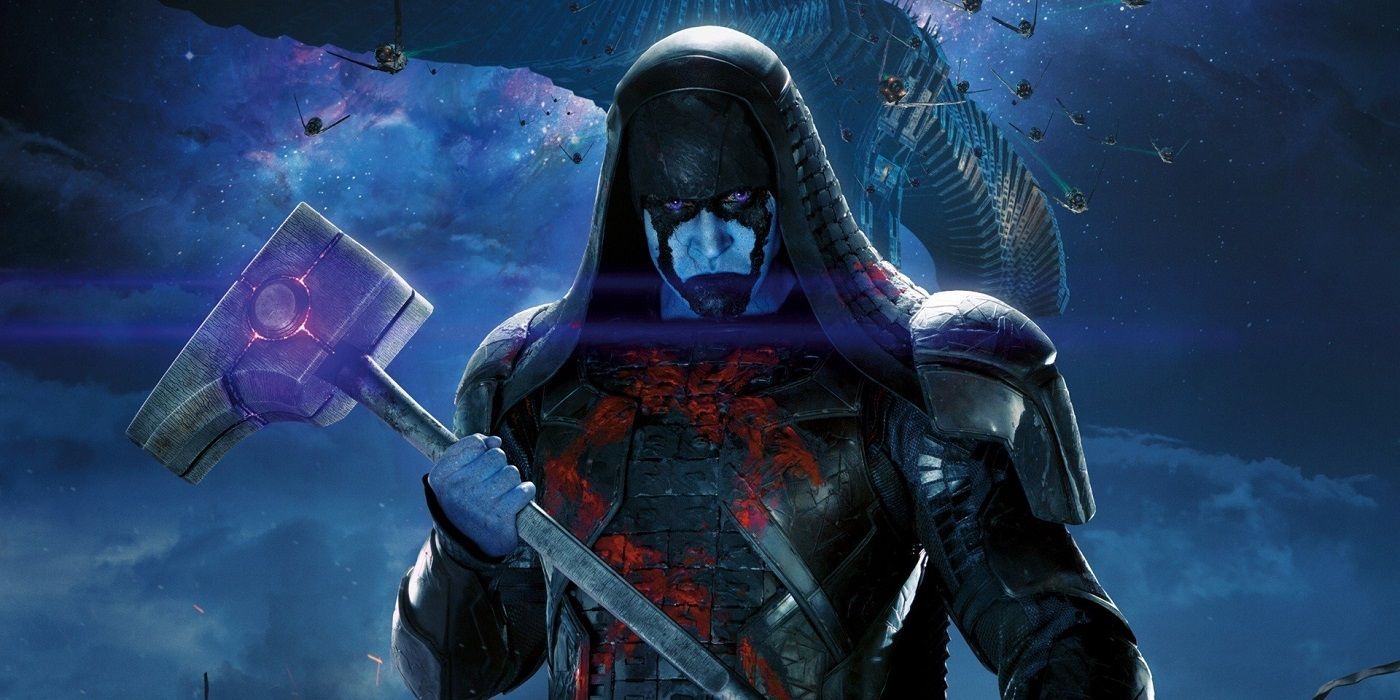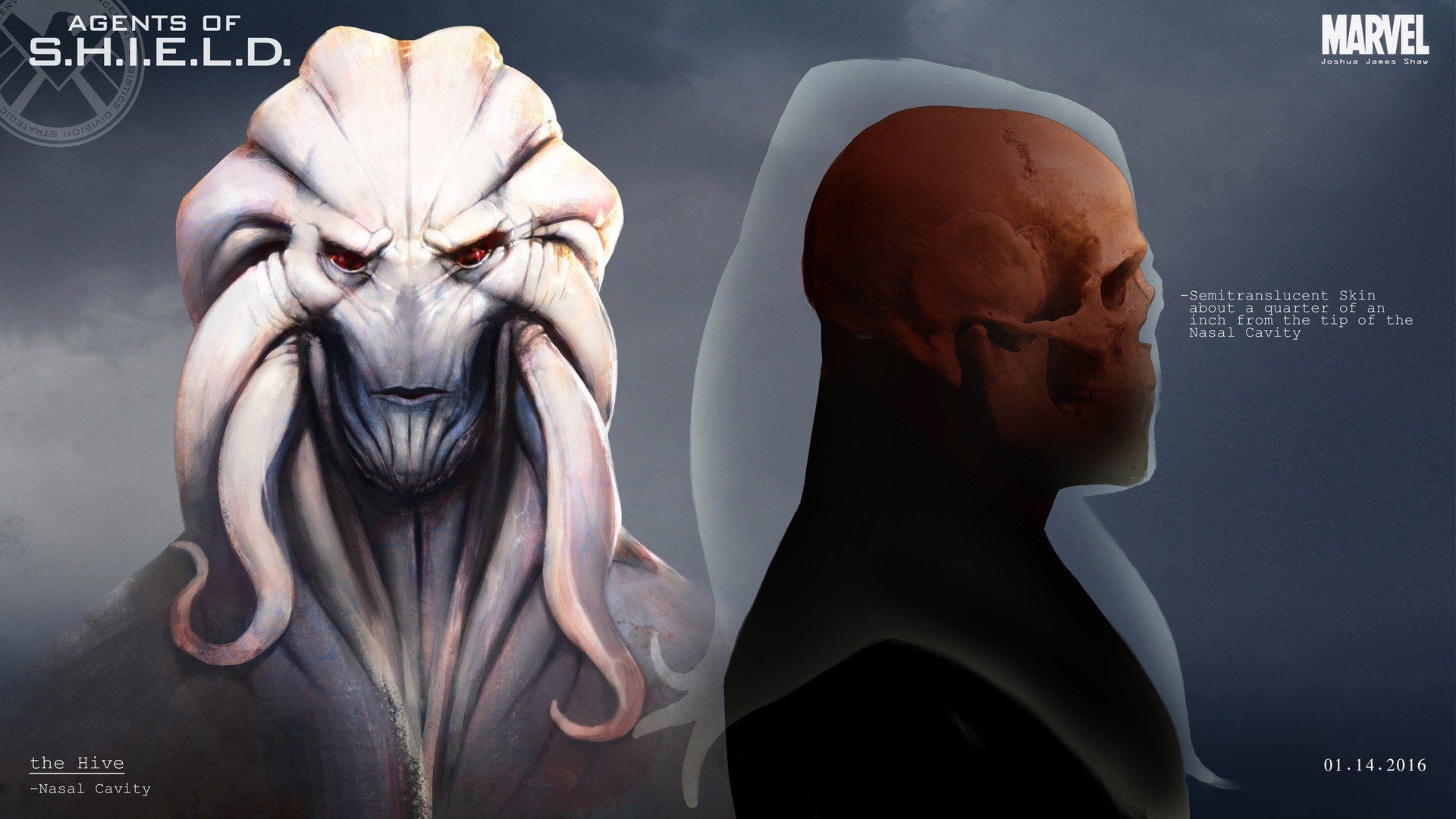There has been no property within the Marvel Cinematic Universe more contested or fraught with development difficulties than The Inhumans. Long promised as a feature film, then abruptly pulled from the movie schedule, the potential franchise has just last night been announced as a new television series, making it the eighth TV entry for Marvel’s ever-growing shared universe.
During nearly the entire process, the MCU had been already introducing and playing around with the concept of the Inhumans, providing fuel for Agents of SHIELD’s narrative fire while also laying the groundwork for the eventual movie entry. Now that The Inhumans is arriving in the realm of television, this already-long backstory is more important than ever, given the possibility for it to cross over with SHIELD. As such, it would behoove us to recap what has gone down before in order to understand just what the new show with its new characters may interact with once it debuts next September.
The beginning: The Kree and the cavemen
The ultra-militaristic alien species known as the Kree (whose sole appearance in the movie side of the MCU is in Guardians of the Galaxy) forged a great interstellar empire tens of thousands of years ago, but they started to lose their position on the cosmic battlefield. In order to keep up the pace of their aggression, one group of Kree, calling themselves the Reapers, decided to visit a number of planets housing primitive lifeforms, who could then be genetically improved upon to produce a race of supersoldiers -- the perfect shock troops to fight on the front lines.
They seemingly found the ideal fodder for their experiments with primitive man on Earth, producing a series of individuals that had a wide range of powers, from teleportation to invulnerable skin to advanced healing factors. Each of these bio-weapons was designed to fit a specific need in the overarching army, giving each troop a purpose in the war effort – the most important of which was their commanding officer, a being who would assimilate all the others into a collective hive mind (hence him dubbed Hive) and who would, thus, lead them and the Kree to victory.
Rather than being a dutiful soldier, however, Hive proved to be more than what the Reapers had bargained for, rebelling against his alien overlords and attempting to drive them from the Earth. Although successful, a number of Hive’s uninfected brethren feared his power (and the loss of their individuality), and they banded together with an assortment of “normal” humans to exile the would-be general to a far-off planet that has since come to be called Maveth, the Hebrew word for “death.” (The method of this banishment was a black alien monolith that doubled as a teleportation portal and whose origins are unknown, though it was presumably brought to Earth by the Kree.)
Once the rest of the Kree discovered what the Reapers were up to, generally, and what had transpired on Earth, specifically, they discontinued the genetic program and vowed to never let another potential insurgency happen again. There is another, more troubling legacy on Earth, however: These genetically-altered individuals are dubbed Inhumans, and while they would quickly be driven into hiding and, thus, lost to the annals of history, one specific group of “normal” followers decided to organize themselves around the vow to retrieve Hive -- who they worshipped as a god -- to Earth and to allow him to fulfill his destiny as the planet’s ruler. This group would ultimately call itself Hydra, and it would parasitically hitch itself to one organization or another over the millennia, such as Nazi Germany (as seen in Captain America: The First Avenger) and SHIELD itself (as revealed in Captain America: The Winter Soldier).
The intervening years
Since Inhumans cannot activate their alien-engineered superpowers until they are exposed to a compound called the Terrigen Mist (produced by Terrigen Crystals, an extremely rare substance), it’s easy for them to either fit seamlessly into mainstream societies around the world or to remain completely in hiding. (Fun fact: Terrigen Mist forces Inhumans to go into a cocoon and reemerge with their new abilities – and, sometimes, altered physical appearance, which makes a marked difference in whether they’re able to re-assimilate into human culture or not.)
By the time we get to the 20th century, Hydra has largely forgotten its Inhuman beginnings – only a small handful of its operatives still adhere to the ancient beliefs, and they are mocked by the leaders of the other cells. However, certain agents have inadvertently rediscovered the Inhumans and have made them the basis for their own efforts at creating a supersoldier program. During World War II, Werner Reinhardt (Reed Diamond), one of Red Skull’s (Hugo Weaving) chief lieutenants, uncovered a Kree body and began a series of experiments on its unique, advanced physiology, although the main bulk of his research was directed at the aliens’ technology (the devices that carry Terrigen Crystals are lethal to “normal” humans, making them efficient weaponry on the battlefield). More recently, Dr. List (Henry Goodman), Baron Wolfgang von Strucker’s (Thomas Kretschmann) right-hand man, tracked down and butchered a whole host of Inhumans in his efforts to understand how he might be able to use the Mind Stone to enhance individuals with super powers – something which he only partially succeeded in before his death, given the existence of both Quicksilver (Aaron Taylor-Johnson) and Scarlet Witch (Elizabeth Olsen).
But it’s SHIELD that has found the most success in exploiting the Kree’s former residence on the planet. Having inherited Hydra’s recovered alien corpse -- Agent Peggy Carter (Hayley Atwell) and the Howling Commandos managed to shut down Werner Reinhardt’s Hydra cell during the final days of WWII -- Director Nick Fury (Samuel L. Jackson) instituted his own experiments with the seemingly-miraculous Kree blood. The ultra-top-secret Project T.A.H.I.T.I. (Terrestrialized Alien Host Integrative Tissue I) eventually discovered that not only could the compound heal any wound, no matter how fatal, it could also bring the dead back to life, even after several days. This makes the program the final component of Fury’s Avengers Initiative, to be used in the event that one of the Avengers falls in the line of duty, although the only time it ends up being employed is when Agent Phil Coulson (Clark Gregg) is murdered at the hands of Loki (Tom Hiddleston) in The Avengers.
The present day: The Inhumans’ rise
SHIELD, in its efforts to register all enhanced individuals on its Index in order to monitor and regulate them, encounters a rather large cloister of Inhumans called Afterlife that is located somewhere in China (and which is just one of several such hidden communities, it is implied); given its disastrous interactions with “normal” people, most notably Hydra, over the decades, the group decides that being cut off from the world is the only way for Inhumans to be left in peace. Afterlife’s leaders even managed to recover a number of Terrigen Crystals, instituting a strict vetting process for which precious few individuals would be selected to undergo Terrigenesis and, therefore, activate their latent alien abilities.
The sudden arrival of SHIELD threatens to upend their secluded, prosperous ways, and a brief-but-brutal conflict ensues between the two. By the battle’s end, Afterlife’s leadership is wiped out and most of its members scatter to the winds, fearing being included on the Index. However, there is a far more permanent consequence: A crate of Terrigen Crystals is knocked off a SHIELD vessel and lands on the bottom of the Pacific Ocean, leaking its contents into the aquatic ecosystem and eventually finding their way into various fish oil pills that are sold around the globe. Although mutated in the process to be harmless to average Homo sapiens, it results in the activation of tens of thousands of Inhumans worldwide – and since these individuals weren’t prepared for the process (or even knew they were alien descendants in the first place), it causes widespread panic and destruction.
This is nothing, of course, compared to the hysteria that results in the “normal” world populace. In America, this sudden “alien invasion” forces President Matthew Ellis (William Sadler) to create a new government agency tasked with the immediate response to and apprehension of these newly-minted Inhumans, the Advanced Threat Containment Unit – a move that leads to his reintroduction to SHIELD, which has continued to secretly exist after its public demise in Captain America: The Winter Soldier as a force to combat Hydra and to attempt to resolve the new alien situation as peacefully as possible. The government’s behind-the-scenes coordination with the spy organization quickly results in SHIELD’s reinstated status as the world’s preeminent espionage enforcer, going a long way to fostering confidence in the public once again.
Not everyone is satisfied that SHIELD is up to the Inhuman challenge, however, or that any response short of genocide is the correct path to follow. The biggest proponent of this anti-alien approach is the Watchdogs, a national militia that is large, well-funded, and well-stocked with the latest in advanced weaponry, implying a connection with certain elements of the American military. (The Watchdogs are also led by none other than Felix Blake [Titus Welliver], a former SHIELD agent who was originally introduced in the Marvel One-Shot short films.) By hacking into the recently-passed Sokovia Accords (the international treaty from Captain America: Civil War that requires each and every enhanced person to be officially registered with the United Nations), the group begins to methodically hunt each and every Inhuman down.
As of right now, it looks like it’s going to be full-out war – the perfect spot for The Inhumans to premiere in.
Agents of S.H.I.E.L.D., season 4 returns Tuesday, November 29 at 10:00 pm on ABC. The Inhumans will premiere its first two episodes in IMAX in September 2017 before debuting on ABC.




